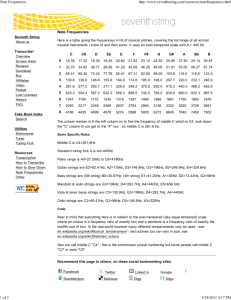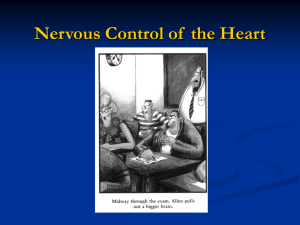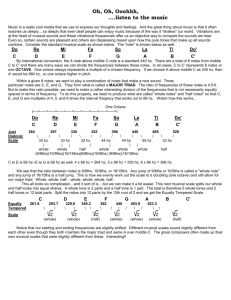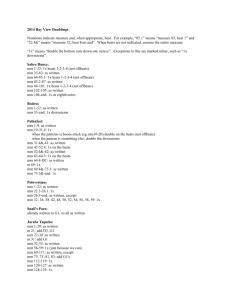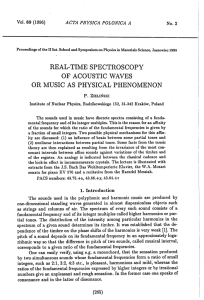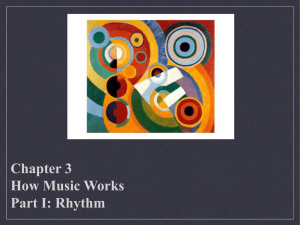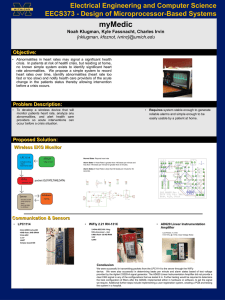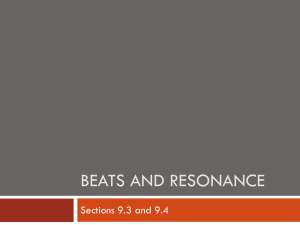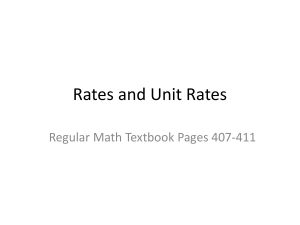hw15_solutions
advertisement
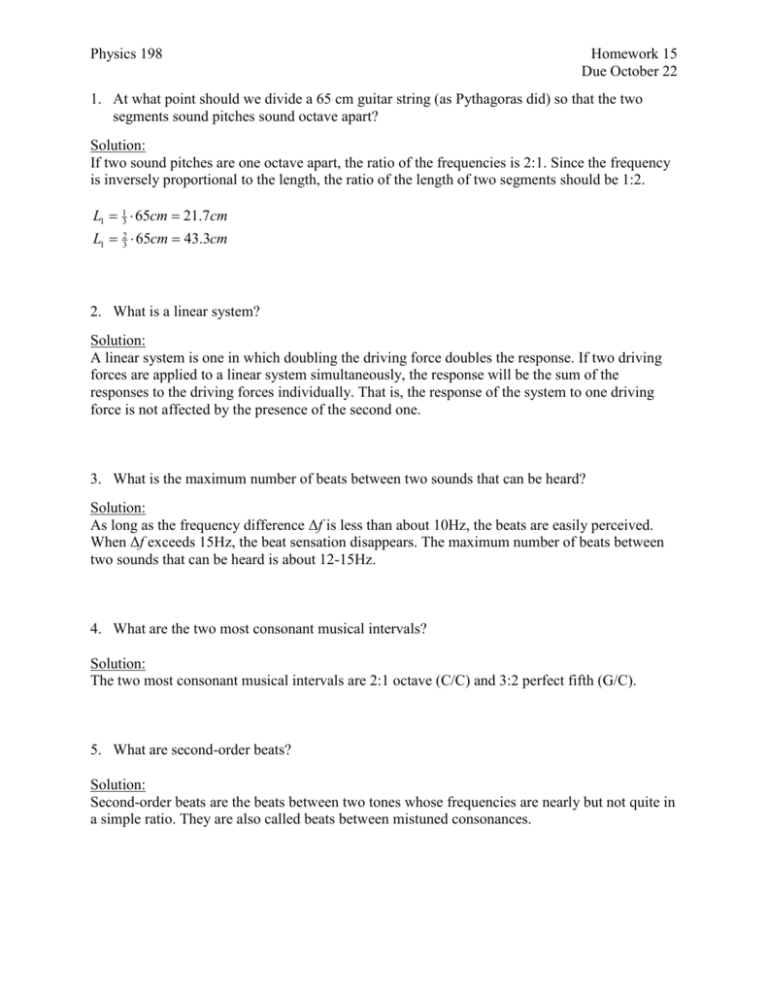
Physics 198 Homework 15 Due October 22 1. At what point should we divide a 65 cm guitar string (as Pythagoras did) so that the two segments sound pitches sound octave apart? Solution: If two sound pitches are one octave apart, the ratio of the frequencies is 2:1. Since the frequency is inversely proportional to the length, the ratio of the length of two segments should be 1:2. L1 13 65cm 21.7cm L1 23 65cm 43.3cm 2. What is a linear system? Solution: A linear system is one in which doubling the driving force doubles the response. If two driving forces are applied to a linear system simultaneously, the response will be the sum of the responses to the driving forces individually. That is, the response of the system to one driving force is not affected by the presence of the second one. 3. What is the maximum number of beats between two sounds that can be heard? Solution: As long as the frequency difference Δf is less than about 10Hz, the beats are easily perceived. When Δf exceeds 15Hz, the beat sensation disappears. The maximum number of beats between two sounds that can be heard is about 12-15Hz. 4. What are the two most consonant musical intervals? Solution: The two most consonant musical intervals are 2:1 octave (C/C) and 3:2 perfect fifth (G/C). 5. What are second-order beats? Solution: Second-order beats are the beats between two tones whose frequencies are nearly but not quite in a simple ratio. They are also called beats between mistuned consonances. Physics 198 Homework 15 Due October 22 6. The lowest fifth on a piano is from A0 (27.5 Hz) to E1 (41.2 Hz). By applying the criteria of roughness, show why is sounds less pleasant than the fifth from, A4 (440 Hz) to E1 (569 Hz), for example. (See Fig. 5.10) Solution: If the frequency difference between two pure tones is greater than the critical band, theysound constant; if it is less than the critical band they sound dissonant. From A0 (27.5 Hz) to E1 (41.2 Hz): Δf = 41.2 Hz – 27.5 Hz = 13.7 Hz . The critical band is about 90Hz (See Fig. 5.10). Δf =13.7Hz < 90Hz , so it sounds less pleasant. From A4 (440 Hz) to E1 (569 Hz): Δf = 660 Hz – 440 H z = 220 Hz . The critical band is about 110 Hz (See Fig. 5.10). Δf =110Hz < 220Hz , so it sounds more pleasant. 7. Pure tones with frequencies 440 Hz and 448 Hz are sounded together. Describe what is heard (pitch of the fused tone, frequency of beats). Do the same for tones with frequencies 440 and 432 Hz. Solution: Pitch of fused tone is f1 f 2 2 . Frequency of beats is fbeats f1 f 2 (1) For two tones of frequencies 440 Hz and 448 Hz: f1 f2 2 440Hz 448Hz 2 444Hz fbeats f1 f 2 440Hz 448Hz 8Hz (2) For two tones with frequencies 440 Hz and 432 Hz f1 f2 2 440Hz 432Hz 2 436Hz fbeats f1 f 2 440Hz 32Hz 8Hz
